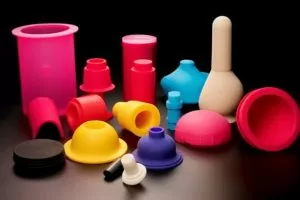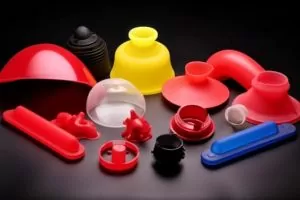Introduction
Silicone rubber compression molding is a highly versatile and widely-used manufacturing process that holds significant importance in various industries. This molding technique involves shaping and curing silicone rubber to create a wide range of products, including grommets and bushings. In this article, we will delve into the world of silicone rubber compression molding and focus on its specific applications for grommets and bushings.
Silicone rubber compression molding has emerged as a preferred method due to its ability to produce durable and reliable components. The process allows for the fabrication of custom-designed grommets and bushings, tailored to meet the unique requirements of different industries. Its significance lies in the exceptional properties of silicone rubber, which makes it an ideal material for grommets and bushings used in critical applications.
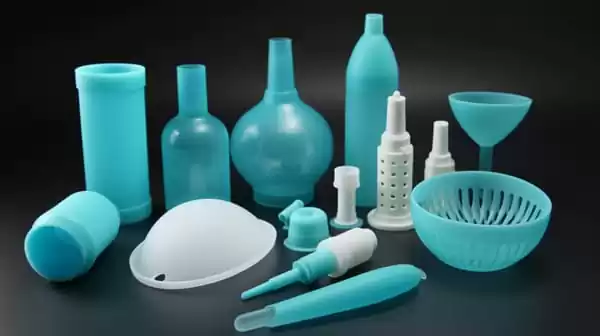
Throughout this article, we will explore the process of silicone rubber compression molding, its advantages, and how it caters to the demands of diverse industries. Additionally, we will highlight the applications of silicone rubber compression molded grommets and bushings in various sectors, underscoring their pivotal role in ensuring safety, efficiency, and performance. Let us now venture into the world of silicone rubber compression molding and its crucial role in the manufacturing of grommets and bushings.
II.Understanding Silicone Rubber Compression Molding process
Definition and Key Characteristics
Silicone rubber compression molding is a versatile manufacturing process used to create various silicone rubber products, including grommets and bushings. It involves placing pre-measured and uncured silicone rubber material into a mold cavity and applying heat and pressure to shape and cure the material. The process results in the transformation of the silicone rubber from a liquid or gum-like state to a solid, durable product.
Key Characteristics of Silicone Rubber Compression Molding:
1.Material Flexibility: Silicone rubber is highly flexible and elastic, allowing it to endure repeated compression and stretching without losing its shape or integrity. This property is crucial for grommets and bushings, as they often experience dynamic movement and pressure.
2.Temperature Resistance: Silicone rubber exhibits excellent resistance to extreme temperatures, making it suitable for applications in both high and low-temperature environments. It can withstand a wide temperature range without significant deformation or degradation.
3.Chemical Resilience: Silicone rubber is highly resistant to chemicals, UV rays, and weathering. This property ensures that grommets and bushings made from silicone or synthetic rubber, can withstand exposure to harsh substances and outdoor elements, enhancing their durability and lifespan.
The Process of Silicone Rubber Compression Molding
The silicone rubber compression molding process involves several distinct stages:
1.Material Preparation: High-quality silicone rubber material, which can be in the form of sheets, pellets, or liquid compounds, is selected based on the specific requirements of the product.

2.Mold Design and Preparation: A mold is designed and created, typically made of steel or aluminum. The mold consists of two halves that fit together to form the desired shape of the grommet or bushing.
3.Loading the Material: The pre-measured amount of uncured silicone injecting raw rubber material is placed into the mold cavity, ensuring it fills all necessary areas and voids.
4.Mold Closure: The two halves of the mold are closed tightly, encasing the silicone material within.
5.Applying Heat and Pressure: Heat and pressure are applied to the mold, initiating the curing process. The combination of heat and pressure allows the material to take the shape of the transfer molding cavity and solidify.
6.Cooling and Ejection: Once the curing process is complete, the mold is cooled down, allowing the silicone molded rubber products to set fully. The solidified product is then ejected from the mold.
Advantages of Using Silicone Rubber for Grommets and Bushings
1.Flexibility and Durability: Silicone rubber’s exceptional flexibility and elasticity ensure that grommets and bushings can withstand constant movement, vibrations, and pressure without losing their structural integrity.
2.Temperature Resistance: Silicone rubber’s ability to endure extreme temperatures makes it suitable for applications in diverse environments, from automotive engines to electronic devices.
3.Chemical and Weather Resistance: Grommets and bushings made from silicone rubber remain unaffected by exposure to chemicals, moisture, and outdoor elements, ensuring longevity and reliable performance.
4.Customization: Silicone rubber compression molding allows for precise and intricate design details, enabling the creation of custom grommets and bushings tailored to specific industry requirements.
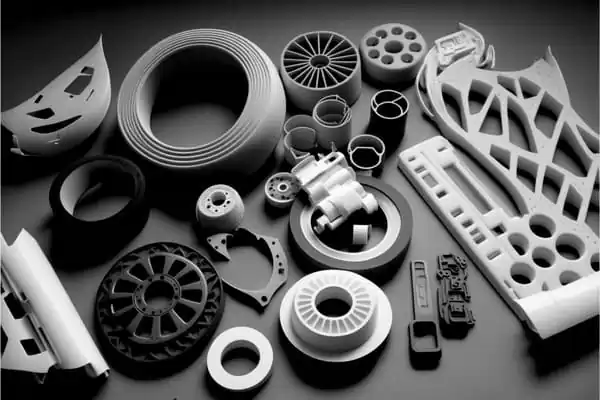
In conclusion, silicone rubber molding offers a reliable and efficient method for manufacturing grommets and bushings with exceptional properties suited for various applications. Its flexibility, temperature resistance, and chemical resilience make silicone rubber injection molding an ideal material choice, ensuring the durability and performance of these essential components across different industries.
II. Grommets and Their Importance
Definition and Role of Grommets
Grommets are small, ring-like components made from various materials, including silicone rubber, metal, or plastic. They are designed to reinforce and protect openings in various materials, such as fabrics, metal sheets, or plastic panels. Grommets typically have a central hole through which cables, wires, or other objects can pass, providing a neat and organized solution for managing and securing these elements.
Essential Role in Different Applications
Grommets play a crucial role in a wide range of applications across different industries:
1.Electronics and Electrical Industry: In electronics and electrical applications, grommets are used to protect wires and cables passing through panels or enclosures. They prevent chafing and abrasion, ensuring the wires are safely routed and organized.
2.Automotive Sector: Grommets are essential in the automotive industry to shield and protect wiring harnesses from sharp edges and vibrations. They prevent damage caused by friction and ensure the integrity of the electrical system in vehicles.
3.Industrial Machinery: Grommets find applications in industrial machinery to protect hoses, cables, and pipes from wear and tear, especially in equipment with moving parts or rotating components.
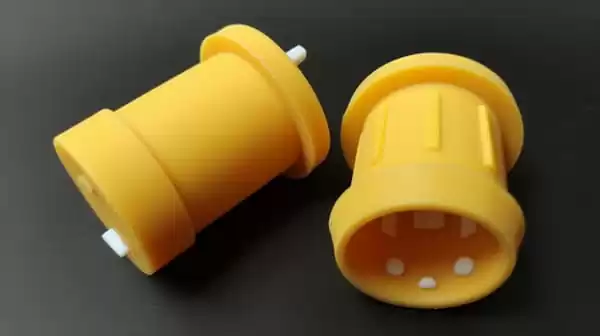
4.Household Appliances: Grommets are used in household appliances like washing machines, refrigerators, and vacuum cleaners to secure and protect power cords and hoses, enhancing safety and longevity.
Addressing Challenges with Durable Materials like Silicone Rubber
Grommets are often subjected to harsh conditions, including extreme temperatures, exposure to chemicals, and constant movement. Therefore, they need to be made from durable materials that can withstand these challenges and maintain their performance over time.
Silicone Rubber’s Advantages for Grommets:
1.Flexibility and Resilience: Silicone rubber offers excellent flexibility and elasticity, allowing grommets to endure repeated compression and stretching without deformation. It ensures that grommets can adapt to dynamic movements without losing their shape or structural integrity.
2.Temperature Resistance: Grommets made from silicone rubber can withstand a wide temperature range, from extreme cold to high heat, without undergoing significant changes in properties. This characteristic is particularly important for applications in automotive engines and industrial machinery, where temperatures can vary drastically.
3.Chemical and Weather Resistance: Silicone rubber grommets exhibit remarkable resistance to chemicals, UV rays, and weathering. They remain unaffected by exposure to moisture, oils, and other harsh substances, ensuring prolonged performance and protection.
Importance of Choosing the Right Material for Grommets
Selecting the appropriate material for grommets is crucial to ensure efficiency and safety in various applications. Silicone rubber, due to its outstanding properties, offers an excellent solution for grommets in critical industries like electronics, automotive, and manufacturing.
By using high-quality silicone rubber grommets, manufacturers can enhance the longevity and reliability of their products, leading to reduced maintenance costs and improved overall safety. Choosing the right material, such as silicone rubber, underscores the commitment to producing components that can withstand challenging environments and ensure optimal performance throughout their lifecycle.
III. Bushings and Their Significance
Definition of Bushings and Their Role in Various Industries
Bushings, also known as plain bearings or sleeve bearings, are cylindrical components that serve as a mechanical support and bearing surface for rotating shafts or other moving parts. They are commonly used in various industries to reduce friction, vibrations, and wear between moving components in machinery and equipment. Bushings are typically made from materials like silicone rubber, bronze, brass, or other self-lubricating materials.
Contribution to Reducing Vibrations and Friction in Machinery
Bushings play a crucial role in reducing vibrations and friction in machinery and equipment, providing several benefits:
1.Vibration Damping: Bushings act as dampers, absorbing and minimizing vibrations generated during machine operation. This helps in maintaining smooth and steady performance, reducing wear on the moving parts, and improving overall stability.
2.Friction Reduction: By providing a low-friction surface between moving parts, bushings decrease the resistance encountered during rotational or linear movements. This results in increased efficiency and reduced energy consumption in machinery.

3.Noise Reduction: Bushings also contribute to noise reduction in mechanical systems by dampening vibrations and preventing metal-to-metal contact, resulting in quieter operation.
4.Improved Lifespan: Bushings protect components from excessive wear and tear, extending the lifespan of machinery and equipment by minimizing the impact of constant friction.
Requirements for Bushings: Flexibility and Temperature Resistance
Bushings are subjected to diverse operating conditions, and they need to meet specific requirements to ensure their effectiveness and longevity:
1.Flexibility: Bushings must exhibit excellent flexibility to accommodate various movements and misalignments that may occur during machine operation. This flexibility allows them to adapt to changing loads and positions without causing excessive stress on the components.
2.Temperature Resistance: In many industrial applications, machinery operates in environments with fluctuating temperatures. Therefore, bushings must be able to withstand a wide temperature range without losing their mechanical properties. This is particularly important in applications where machinery is exposed to extreme heat or cold.
Silicone Rubber Bushings: An Ideal Solution
Silicone rubber bushings offer unique advantages that make them an ideal solution for various industries:
1.Flexibility: Silicone rubber’s inherent flexibility allows it to absorb shocks and vibrations, providing effective damping in high-impact applications.
2.Temperature Resistance: Silicone rubber bushings can withstand extreme temperature variations, making them suitable for use in both high-temperature industrial processes and sub-zero conditions.
3.Self-Lubrication: Silicone is natural rubber and possesses natural lubricating properties, reducing friction and wear between moving parts, leading to improved efficiency and reduced maintenance needs.
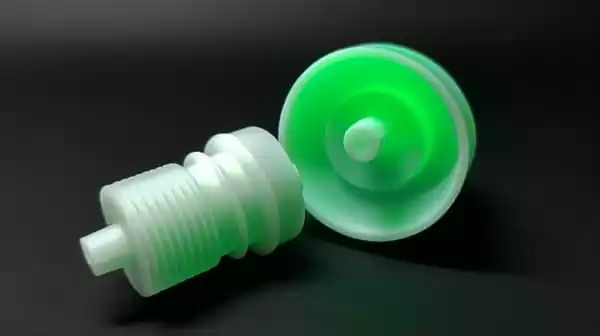
4.Chemical and Weather Resistance: Silicone rubber bushings are highly resistant to chemicals, UV rays, and weathering, ensuring prolonged performance even in harsh environments.
In conclusion, bushings play a significant role in various industries by reducing vibrations, friction, and wear in machinery and equipment. They contribute to smoother operation, noise reduction, and improved efficiency. To meet the demands of diverse operating conditions, bushings need to exhibit flexibility and temperature resistance. Silicone rubber bushings, with their exceptional properties, prove to be an excellent choice, providing reliable performance and extended lifespan in critical applications across industries.
IV. Applications of Silicone Rubber Compression Molding for Grommets
1. Use of Silicone Rubber Compression Molding in the Electrical and Electronics Industry
The electrical and electronics industry heavily relies on silicone rubber compression molding to produce grommets that serve critical functions in various applications. Grommets play a vital role in safeguarding wires, cables, and connectors, ensuring efficient and reliable performance of electronic devices and systems.
2. Protection of Wires and Cables, and Prevention of Moisture and Dust Ingress
Silicone rubber grommets are designed to protect wires and cables as they pass through panels, enclosures, or housings. They act as a barrier, shielding these delicate components from friction, abrasion, and potential damage caused by sharp edges or drilled holes.
One of the primary benefits of silicone rubber grommets is their ability to prevent moisture and dust ingress. They create a watertight and airtight seal around the wires and cables, safeguarding sensitive electronic components from exposure to external elements. This protection is particularly critical in outdoor electronic equipment, automotive applications, and any device that may encounter harsh environmental conditions.

3. Examples of Electronic Devices that Utilize Silicone Rubber Grommets
Silicone rubber grommets find extensive use in various electronic devices, ensuring their reliability and longevity. Some notable examples include:
a. Computer Servers and Data Centers: In data centers and computer servers, silicone rubber grommets are used to organize and protect intricate wiring systems. They prevent cable chafing, minimize vibration-induced failures, and maintain a neat and organized cable layout.
b. Home Entertainment Systems: In home theaters and entertainment systems, silicone rubber grommets secure and insulate audio and video cables, ensuring uninterrupted and high-quality audio-visual performance.
c. Telecommunication Equipment: In the telecommunication industry, silicone rubber grommets are used in routers, modems, and switches to protect delicate fiber optic cables and ensure reliable data transmission.
d. Automotive Electronics: In the automotive sector, silicone rubber grommets are found in various electronic components, including ECU (Engine Control Units), sensors, and wiring harnesses. They safeguard critical electronics from the harsh under-the-hood environment and help maintain optimal performance of the vehicle’s systems.
e. Medical Devices: Silicone rubber grommets are utilized in medical devices, such as diagnostic equipment, imaging machines, and patient monitoring systems, where precision and reliability are paramount.
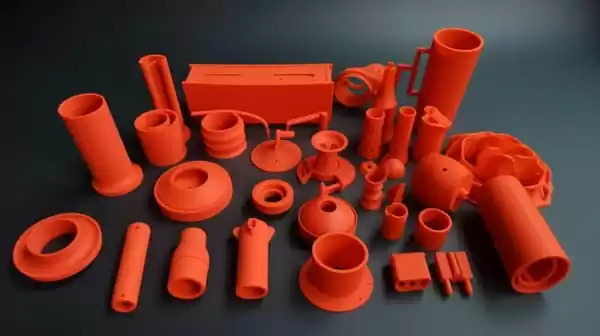
f. Appliances and Household Electronics: Silicone rubber grommets are used in household appliances like refrigerators, microwave ovens, and washing machines to protect power cords and ensure safety during everyday use.
In conclusion, silicone rubber compression molding plays a crucial role in the electrical and electronics industry by producing grommets that protect and secure wires, cables, and connectors. The use of silicone rubber grommets ensures the longevity and reliability of electronic devices by preventing moisture and dust ingress, thus safeguarding delicate electronic components from potential damage. From data centers to automotive electronics, silicone rubber grommets are an integral part of diverse electronic devices and systems, contributing to their efficient and safe operation.
V. Advantages of Silicone Rubber Compression Molded Grommets and Bushings
Silicone rubber compression molded grommets and bushings offer numerous advantages that make them preferred choices in various industries. These advantages stem from the unique properties of silicone rubber, which contribute to the exceptional performance of these components.
1. Flexibility, Temperature Resistance, and Chemical Resilience
Silicone rubber grommets and bushings exhibit remarkable flexibility, allowing them to adapt to dynamic movements without compromising their structural integrity. This flexibility is crucial for applications in which components experience constant vibrations and mechanical stresses.
Additionally, silicone rubber boasts exceptional temperature resistance, withstanding extreme heat and cold without significant changes in its properties. This attribute makes silicone rubber grommets and bushings suitable for applications in both high-temperature industrial processes and sub-zero environments.
Furthermore, the chemical resilience of silicone rubber ensures that grommets and bushings remain unaffected by exposure to chemicals, oils, moisture, and UV rays. This chemical resistance enhances the longevity of these components and guarantees their reliable performance in harsh and challenging environments.
2. Longevity and Reliability
Silicone rubber compression molded grommets and bushings are renowned for their durability and long service life. Their ability to endure repeated compression, stretching, and mechanical stress without deterioration ensures sustained performance and reduced maintenance requirements.
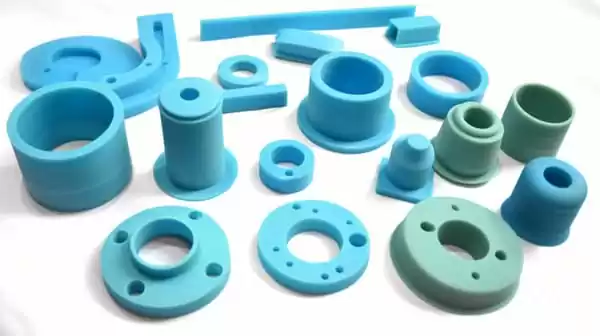
The self-lubricating properties of silicone rubber contribute to the reduction of friction between moving parts, leading to improved efficiency and wear resistance. As a result, silicone rubber grommets and bushings provide reliable and uninterrupted operation in various applications, ranging from household appliances to heavy industrial machinery.
3. Versatility in Various Applications
The versatility of silicone rubber allows for the production of custom-designed grommets and bushings that cater to specific industry requirements. Whether used in the electrical and electronics industry, automotive sector, or industrial machinery, silicone rubber grommets and bushings offer a tailored solution for diverse applications.
Their ability to dampen vibrations, reduce friction, and provide a secure seal against moisture and dust ingress makes silicone rubber components invaluable in critical applications. They ensure the safety, efficiency, and smooth functioning of electronic devices, vehicles, and industrial equipment.
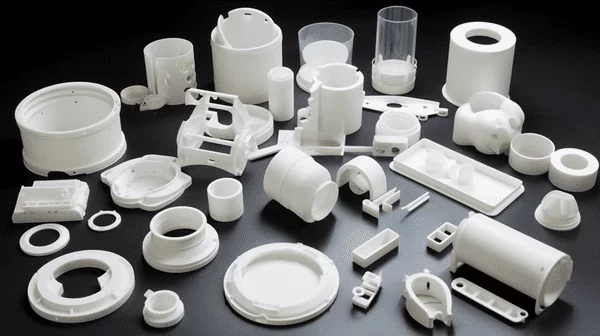
Conclusion
Silicone rubber compression molding plays a significant role in the creation of grommets and bushings, making it a versatile and essential manufacturing process across industries. The unique properties of silicone rubber compression molds, such as flexibility, temperature resistance, and chemical resilience, make it the ideal material for producing grommets and bushings that meet diverse application requirements.
Throughout this article, we explored the process of silicone rubber compression molding and its application in grommets and bushings. In the electrical and electronics industry, silicone rubber grommets protect wires and cables while preventing moisture and dust ingress, ensuring safe and reliable operation. In the automotive sector, silicone rubber bushings isolate vibrations, enhance alignment, and contribute to a smoother and more comfortable ride.
The advantages of silicone rubber in different industries are evident, ranging from its ability to dampen vibrations and reduce friction to its exceptional resistance to temperature variations and chemical exposure. These properties extend the longevity and reliability of silicone rubber components, making them indispensable in critical applications across diverse sectors.
As we look to the future, silicone rubber compression molding will continue to play a vital role in manufacturing essential components. The demand for reliable, long-lasting, and adaptable solutions in various industries will persist, and silicone rubber molding’s unmatched properties will ensure it remains a top choice for grommets, bushings, and other custom-designed components.
In conclusion, silicone rubber compression molding is not only a manufacturing process but a gateway to creating grommets and bushings that excel in their roles in diverse applications.

